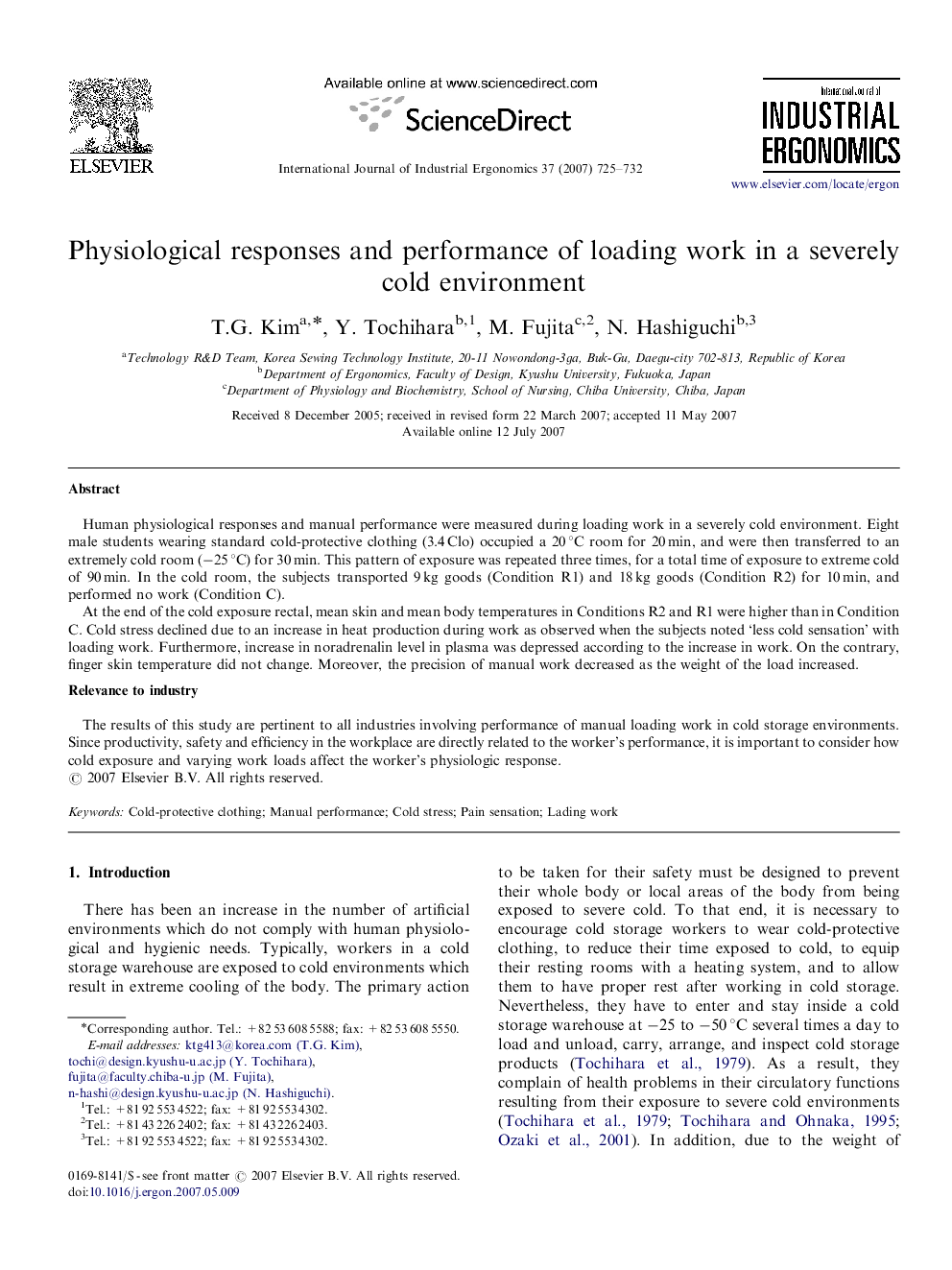| Article ID | Journal | Published Year | Pages | File Type |
|---|---|---|---|---|
| 1096927 | International Journal of Industrial Ergonomics | 2007 | 8 Pages |
Human physiological responses and manual performance were measured during loading work in a severely cold environment. Eight male students wearing standard cold-protective clothing (3.4 Clo) occupied a 20 °C room for 20 min, and were then transferred to an extremely cold room (−25 °C) for 30 min. This pattern of exposure was repeated three times, for a total time of exposure to extreme cold of 90 min. In the cold room, the subjects transported 9 kg goods (Condition R1) and 18 kg goods (Condition R2) for 10 min, and performed no work (Condition C).At the end of the cold exposure rectal, mean skin and mean body temperatures in Conditions R2 and R1 were higher than in Condition C. Cold stress declined due to an increase in heat production during work as observed when the subjects noted ‘less cold sensation’ with loading work. Furthermore, increase in noradrenalin level in plasma was depressed according to the increase in work. On the contrary, finger skin temperature did not change. Moreover, the precision of manual work decreased as the weight of the load increased.Relevance to industryThe results of this study are pertinent to all industries involving performance of manual loading work in cold storage environments. Since productivity, safety and efficiency in the workplace are directly related to the worker's performance, it is important to consider how cold exposure and varying work loads affect the worker's physiologic response.
